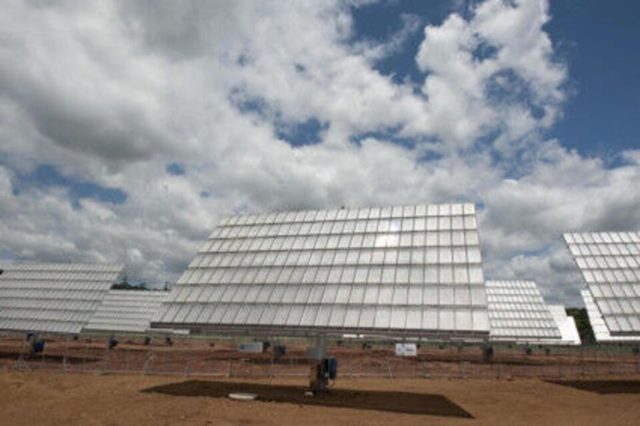Energy analysts have questioned the repurposing of Eskom’s Komati power station for a solar and wind project funded by the World Bank to the tune of R9 billion.
ECONOMISTS are pessimistic about the manufacturing and mining figures expected to be released on Thursday owing to severe load shedding in September.
Energy analysts have also questioned the repurposing of Eskom’s Komati power station for a solar and wind project funded by the World Bank to the tune of R9 billion.
Eskom and the World Bank separately announced on Friday that the Komati power station, which was effectively closed last week after reaching the end of its life, would be repurposed for solar, wind and battery-storage capacity.
This would also help maintain the town’s economy by upskilling workers who are residents. The new Komati power station will include the provision of 150MW of solar, 70MW of wind, and 150MW of storage batteries.
The World Bank said the project would also create opportunities for affected workers and communities, with Eskom having already established a containerised micro-grid assembly factory at Komati and recently signed a partnership agreement with the SA Renewable Energy Technology Centre of the Cape Peninsula University of Technology and the Global Energy Alliance for People and Planet to develop a Komati training facility.
A report by the same institutions said South Africa’s transition to net-zero will require total incremental financing of R8.5 trillion to 2050, and that the funding gap could be closed only with the support of external resources.
Nuclear physicist Dr Kelvin Kemm, who made no bones about the marginalising of nuclear in the Just Transition programmes, said he had a big problem trying to figure out how you could use a coal-fired power station for wind and solar in an area not notable for these resources, according to the country’s wind and solar map.
“For wind, you have to go where the wind is. If you look at a wind map of South Africa, the wind is around the Cape’s coastlines. Komati is not a wind area. So where is the wind going to be harvested?
“Similarly, the solar. There are solar maps that show the best place to go is the Northern Cape. Okay, around Mpumalanga it is generally sunny, but to collect anything meaningful from solar you need a massive area.“
He said that, as a rule of thumb, when politics dictated an engineering solution, it was likely to be wrong. “What we had in this instance was a foreign country telling us to pick a site – Komati – and put solar and wind there. Fundamentally, that was crazy,” he said.
Kemm advocated for locally-made small modular reactors, which he said were garnering interest in many international markets. Solar had quietly made a comeback in many a country’s energy mix.
Energy expert Matthew Cruise raised questions about a multibillion-rand loan from the World Bank, saying the benefit to South Africa would be limited.
He said Germany was now going back to coal and working on plans to bring nuclear back after realising that big solar farms and big wind farms could not be relied upon for stable electricity.
“It is very concerning for me to see that, with the load shedding we have, the government is just talking about renewables when they don’t really solve the problem.”
Energy specialist Chris Yelland said that, as the first Just Transition programme, the Komati project would be a learning curve. He did not anticipate problems, as Eskom had taken on much bigger projects in the Kusile and Medupi power plants, which were priced many times over the Komati recommissioning.
“I think we should grab this opportunity. It comes with preferential funding we would not have attained anywhere else. Compare this amount and look at the more than R250 billion builds for Medupi and Kusile. This is much smaller, and it is a good thing for us to gather the experience as the Just Transition goes forward,” Yelland said.
Eskom on Friday said it had recently signed a collaboration agreement with the SA Renewable Energy Technology Centre to develop renewable energy artisan skills to support the implementation of the Just Energy Transition. It said the objective was to educate, re-skill and upskill Eskom Komati power station staff and qualifying beneficiaries from the surrounding communities in the Mpumalanga region.
To achieve this, Eskom was working with its recognised labour unions and representatives of the host community, said Eskom CEO André de Ruyter.
– BUSINESS REPORT








